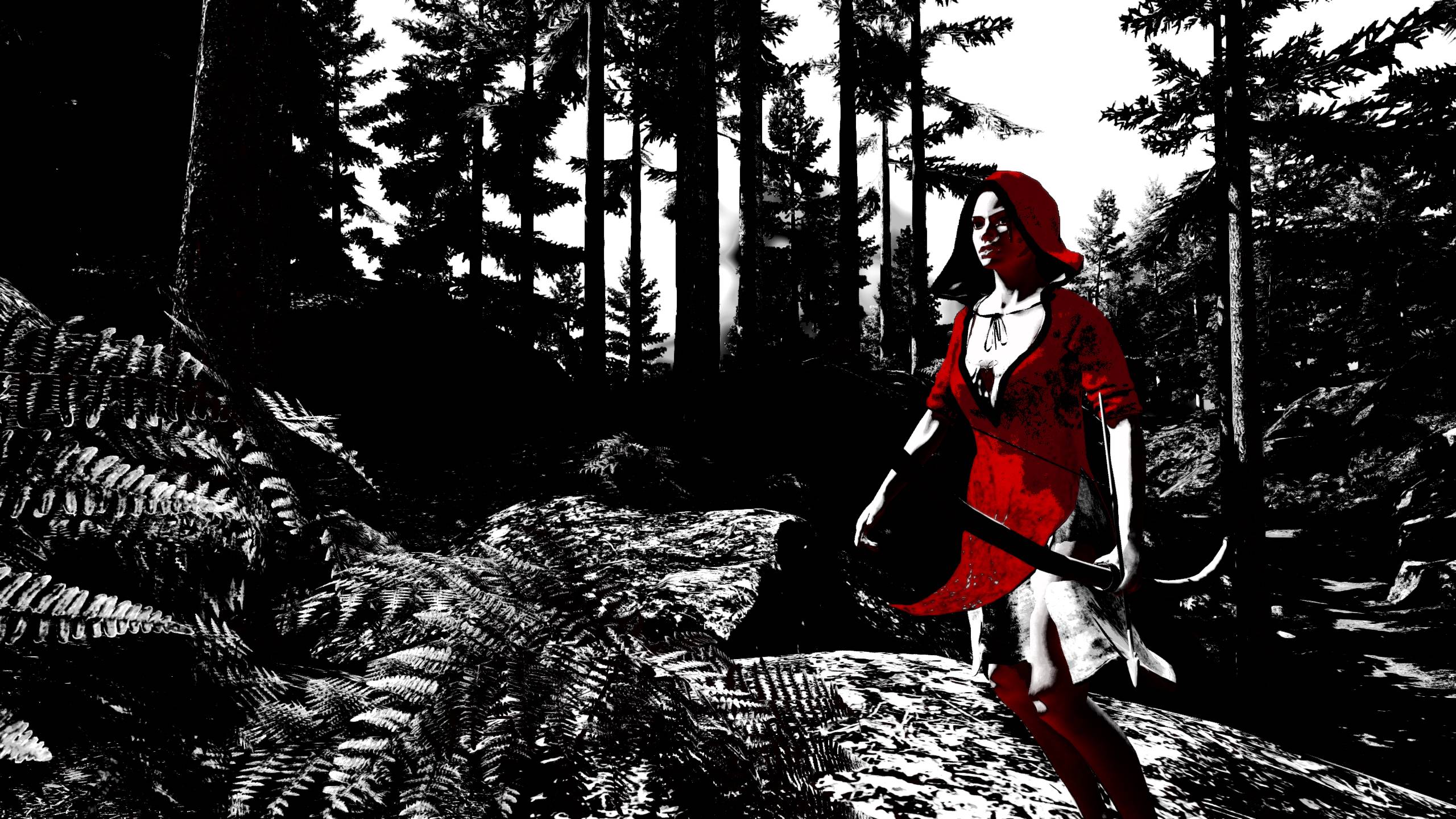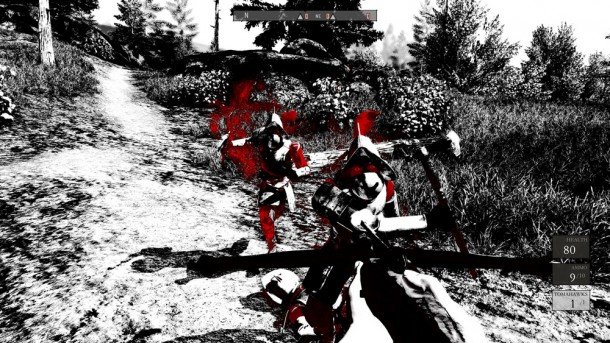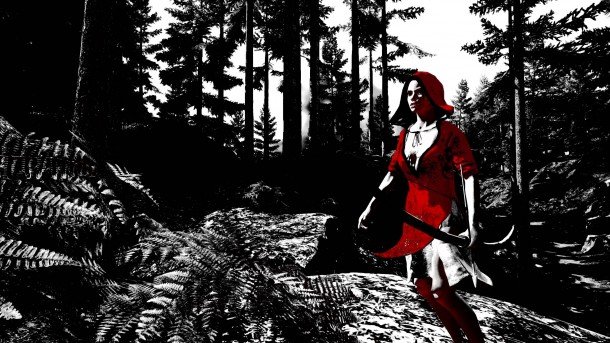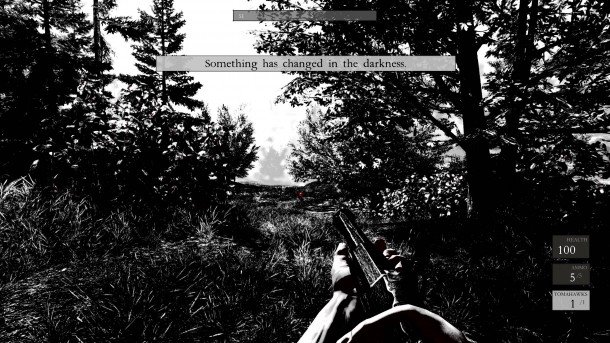Betrayer announced — hands-on with the new FPS from the creators of F.E.A.R. and No One Lives Forever

Six of the key people behind F.E.A.R. and No One Lives Forever have spent the last 11 months developing a first-person shooter in secret. Betrayer , revealed first to PC Gamer, is an eerie single-player game set in haunted, early colonial-era Virginia. I've played the first hour and a half, something you'll be able to do when Betrayer releases through Steam Early Access on August 14.
Betrayer doesn't fit neatly into an existing genre. On the surface, it's an FPS set in open, pristine American wilderness that happens to be crawling with undead conquistadors. But the game's monochromatic art direction, gloomy tone, and sense of mystery distinguish it from other indie and horror projects.
The story of Betrayer is expressed through scattered clues—gravestone engravings, artifacts, notes, and other evidence that you find in the world. Assembling these clues pieces together the truth of what happened to an abandoned British settlement. One of colonial history's greatest mysteries, the Roanoke colony, was among the inspirations for this premise, says creative lead Craig Hubbard. “The social situation of that time was really interesting,” says Hubbard, formerly the lead designer on Shogo: Mobile Armor Division, F.E.A.R., and the NOLF series. “I don't know if you've read about what it was like to be in the Pilgrim colonies, like if you broke the law, but they'd like... pile stones on you until you died. It was just brutal and horrific and that's great subject matter for an atmospheric and eerie game.”

Betrayer's black-and-white color filter expresses that eeriness more than anything else. At the outset, 99 percent of the world is monochromatic, with red accents used on objects-of-interest and enemies. It's a visual approach that deliberately makes the world a little hard to decode (“It feels like your brain is having to make sense out of things in a way that keeps you engaged,” as Hubbard describes it), and it imbues traversing what's otherwise a sparsely-populated world with paranoia and unease, but not outright fear.
Surprisingly, this look wasn't part of Betrayer's initial design but something that emerged through iteration. Betrayer used to be colorful. “When we turned it off and when we went back to color, we missed the tension. We missed being in that world,” says Larry Paolicelli, CEO and UI designer. “We'd do playtesting, and we'd show people both, and they liked the black and white better, because of that tension, because of that sense of mystery.”

The surreal look of Betrayer also melds with its low emphasis on instruction. You have a map (with points you can fast-travel between as you discover them), and the game indicates when you've discovered all the clues in an area, but beyond that there's no directional arrow, HUD pop-ups, or other elements that guide you. What replaces this is a listening mechanic--at any point, you can tap a key to hear haunting white noise emanate from areas where clues can be found, the intensity of which depends on your proximity.
It's a lovely system for the way it uses something imprecise, organic, and mysterious to preserve the act of exploration. “It's been so long since someone's done something this austere, that it just seemed like an opportunity,” Hubbard says. “We originally had an objective system that would tell you more of what to do, but we were finding that by doing that, people didn't care about the mystery, it just felt more mechanical. So pulling some of that out, more player investment came out of that.”
The biggest gaming news, reviews and hardware deals
Keep up to date with the most important stories and the best deals, as picked by the PC Gamer team.
Considering the team's modest size, I was impressed with how technically sound Betrayer's combat was. Movement is comfortably arcadey (infinite sprint, full-speed backpedaling), and the archery handling feels similar to Far Cry 3: lightweight, with just a smidge of arrow-drop. The primary enemies, the conquistadors, collapse into ragdolled piles when you deal a killing blow, and they're randomly placed in the world--when I died near a cliff and respawned, their quantity and position completely changed. Betrayer also adopts an element from Dark Souls --when you die, any carried money is left on your corpse. If you die again without retrieving it, that money is lost.

Betrayer struck me as an interesting and worthy experiment in creating a shooter that has competent combat but doesn't necessarily define itself through it. The conquistadors are unsettling, but after an hour or so they became relatively easy to dispatch from a distance, especially after I earned enough loot to buy a bow that dropped them in one or two shots instead of three. It seems like it'll be an experience driven by its mystery more than by its musketplay.
I'm curious and slightly concerned about how sparse the world felt. On the one hand, the emptiness of the dead settlement helps set the mood, but the absence of say, wildlife in the world, made wandering feel repetitive here and there. As long as Betrayer can create a steady trickle of surprises through its planned fiveish hours, I'll be happy--this is absolutely a project worth supporting if you appreciate atmospheric first-person games.
Betrayer will be available for $15 on Steam Early Access on August 14. See more screenshots on the next page.

Evan's a hardcore FPS enthusiast who joined PC Gamer in 2008. After an era spent publishing reviews, news, and cover features, he now oversees editorial operations for PC Gamer worldwide, including setting policy, training, and editing stories written by the wider team. His most-played FPSes are CS:GO, Team Fortress 2, Team Fortress Classic, Rainbow Six Siege, and Arma 2. His first multiplayer FPS was Quake 2, played on serial LAN in his uncle's basement, the ideal conditions for instilling a lifelong fondness for fragging. Evan also leads production of the PC Gaming Show, the annual E3 showcase event dedicated to PC gaming.

